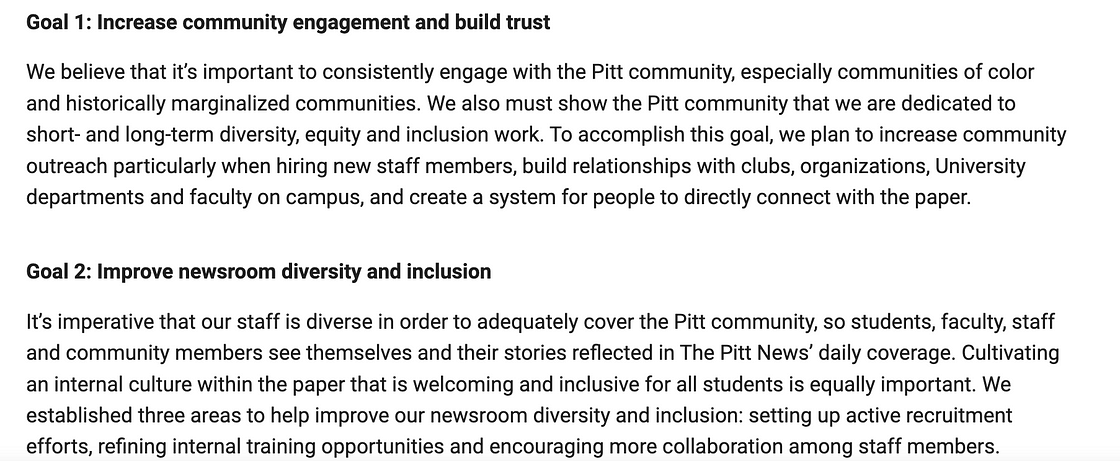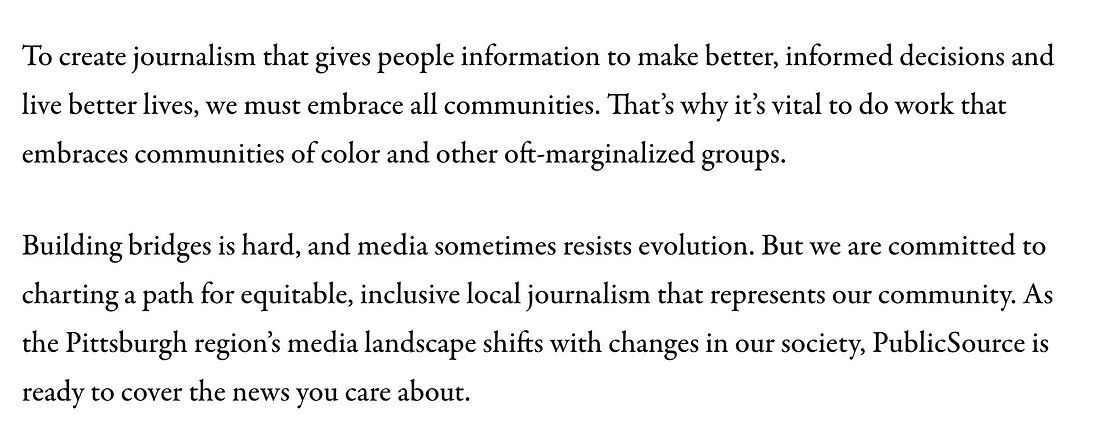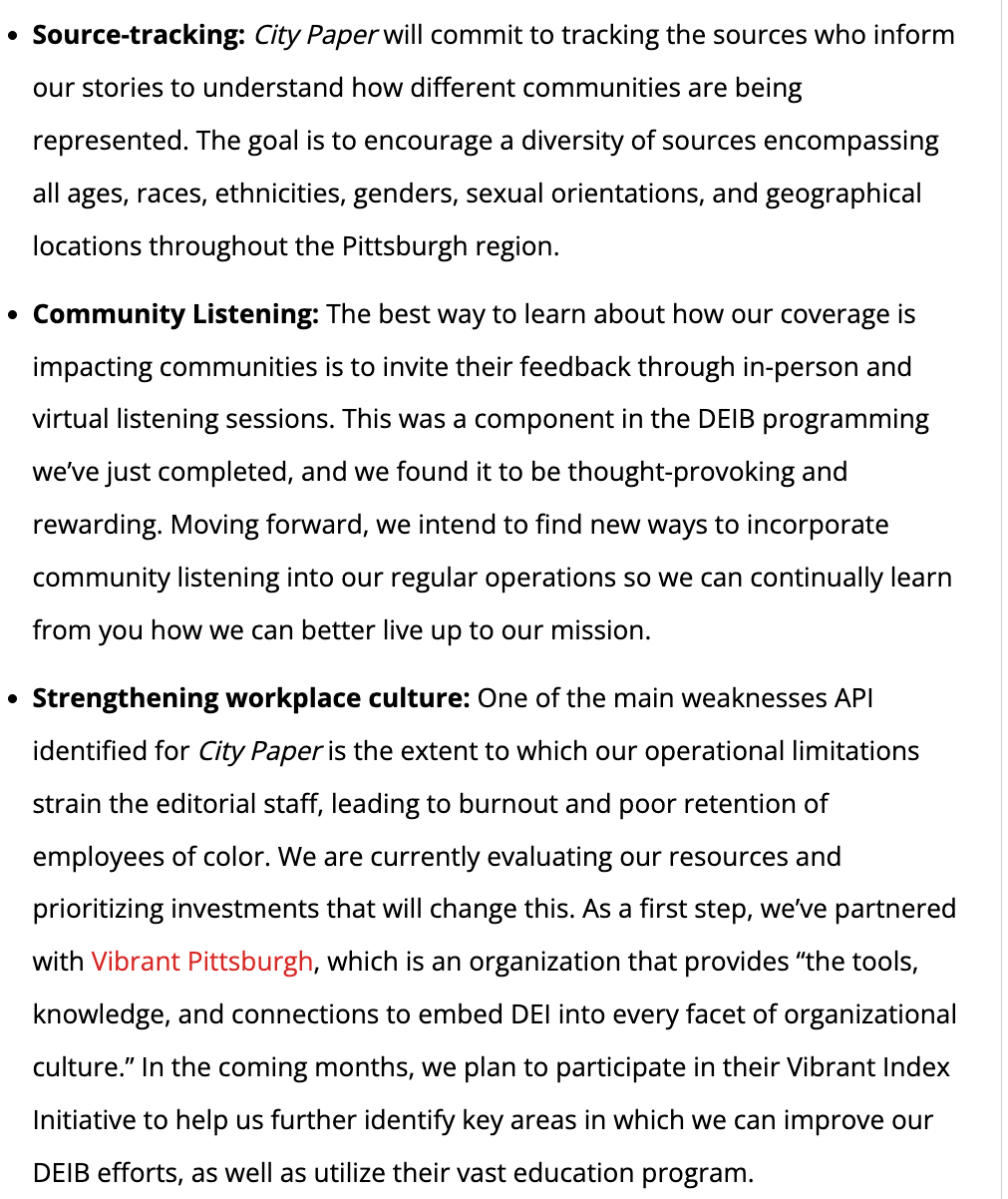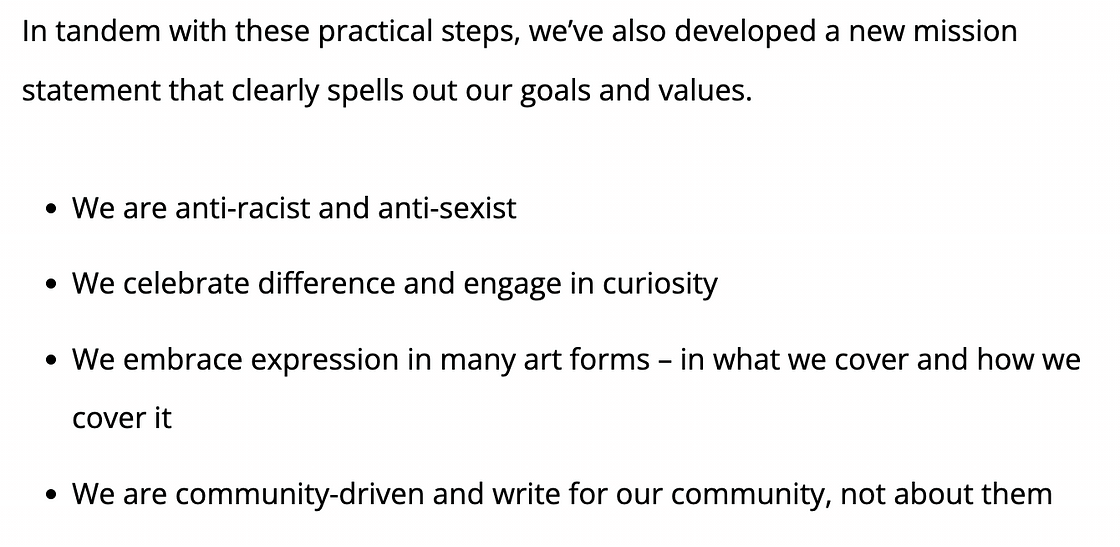
Talking publicly about diversity issues can be challenging. But, as with anything journalists do, actions and intentions (especially good ones) are likely to go unnoticed by news consumers.
See how newsrooms talk publicly about improving diversity in their coverage
Talking publicly about diversity issues can be challenging. But, as with anything journalists do, actions and intentions (especially good ones) are likely to go unnoticed by news consumers.
If you don’t tell your community that you are working toward a goal, that you have ethics, that you care about getting right or, in this case, that you want to increase diversity and more effectively cover the whole community, they won’t know that. You have to tell them.
At Trusting News, we have been working with newsrooms on how to reach communities of color better, how newsrooms can increase staff diversity and how journalists can better reflect and cover their complex and diverse communities.
We have been working on this because we know:
- Newsrooms are very often staffed by people who have different values, views and experiences than the communities they cover.
- Newsrooms, generally speaking, are more white, more affluent and more educated than the communities they serve.
- Journalists and editors are also more likely to hold progressive political views and live in urban areas, and are also less likely to have a military background and less likely to be religious.
Our partners at The American Press Institute recently conducted a project to help newsrooms address diversity disparities.
The cohort of newsrooms used the API Inclusion Index developed and spearheaded by API Director of Inclusion and Audience Growth Letrell Deshan Crittenden to uncover inequitable practices through a comprehensive assessment of seven areas that could impact communities of color. The Inclusion Index report shares overarching recommendations for news organizations to improve diversity and inclusivity in their practices, including:
- Development of pipelines for training young, local talent, especially people of color
- Collaborating with the community through the establishment of advisory boards
- Regularly assessing the sources used in reporting
The program involved five news organizations in Pittsburgh: the Pittsburgh Tribune-Review, PublicSource, Pittsburgh City Paper, The Pitt News and the Pittsburgh Post-Gazette.
The participating news organizations recently shared their reasons for participating, the results of their assessments, and their plans for moving forward, which focus on community engagement, the professional development of young local talent, and internal cultural changes to support staff from marginalized communities.
We believe the work recently completed by these newsrooms and API will help the journalists better serve their diverse communities. By talking publicly about their work, the newsrooms are getting on the record about their commitment to diversity while showing their community they want to better serve them. That’s something our team emphasized when we worked with the five newsrooms.
In the examples below, you will see how the newsrooms got on the record about their goals and future plans related to diversity.
If you have an example of talking publicly about your commitment to diversity or how you work to cover your diverse community fairly let us know here.
The Pitt News
The Pitt News wrote a letter from the editor explaining their diversity, equity and inclusion plans. In the letter, the staff explained the process they went through with the API cohort and highlighted two goals they will be focusing on: increasing community engagement and building trust and improving newsroom diversity and inclusion.

They also included a feedback form for people to ask them questions and leave comments about their plans.
PublicSource
PublicSource wrote about its work with API in a story on its website. They began the post by recognizing that it and other news outlets have not always done a good job covering communities of color. They also wrote about how this work is challenging but they are committed to it nonetheless.

In the post, the news organization also outlined the steps it’s taking to improve its connection with these communities and to create a more diverse and inclusive newsroom. Those steps include creating asset maps, a community advisory group, and tracking diversity in its hiring practices. The organization said it is optimistic about its future and is dedicated to making a positive impact in the Pittsburgh region.
Pittsburgh Tribune-Review
The Pittsburgh Tribune-Review wrote about their participation in the API cohort in an editorial. In it, they explained why they took part in the program, admitted the work is not easy and shared what they heard during a community listening session.

According to Ben Schmitt, a Tribune-Review deputy managing editor, the API program revealed the newsroom was mostly homogeneous and needed more diverse perspectives in their news coverage. To make improvements in these areas, the Tribune-Review created a diversity scholarship program and plans to broaden its reach by sending reporters into diverse communities and holding community listening sessions.
Pittsburgh City Paper
In an editorial, the Pittsburgh City Paper told the Pittsburgh community about its participation in the API cohort. The news organization said the program helped the newspaper identify areas for improvement in their internal culture and coverage of different communities. As a result, the newspaper has set three goals for improvement: source tracking to ensure a diverse range of sources, community listening to gather feedback from communities, and strengthening workplace culture to retain diverse employees.

The newspaper also developed a new mission statement that reflects its anti-racist and anti-sexist values and its commitment to community-driven journalism.

At the end of the post, the newsroom explained why they are making this commitment public.
“By making this public, we hope you will help us live up to these pledges as we do our part to create a better media landscape for Pittsburgh.” — Pittsburgh City Paper.
Editor’s note: Portions of this Medium post were generated using OpenAI’s language model, ChatGPT. Trusting News has been curious about how the tool can be used by journalists and wanted to try it out. In this post, ChatGPT was used to summarize the published pieces by the newsrooms. It gave us a solid start at some summary language but still required some editing.
At Trusting News, we learn how people decide what news to trust and turn that knowledge into actionable strategies for journalists. We train and empower journalists to take responsibility for demonstrating credibility and actively earning trust through transparency and engagement. Subscribe to our Trust Tips newsletter. Follow us on Twitter andLinkedIn. Read more about our work at TrustingNews.org.

Assistant director Lynn Walsh (she/her) is an Emmy award-winning journalist who has worked in investigative journalism at the national level and locally in California, Ohio, Texas and Florida. She is the former Ethics Chair for the Society of Professional Journalists and a past national president for the organization. Based in San Diego, Lynn is also an adjunct professor and freelance journalist. She can be reached at lynn@TrustingNews.org and on Twitter @lwalsh.



